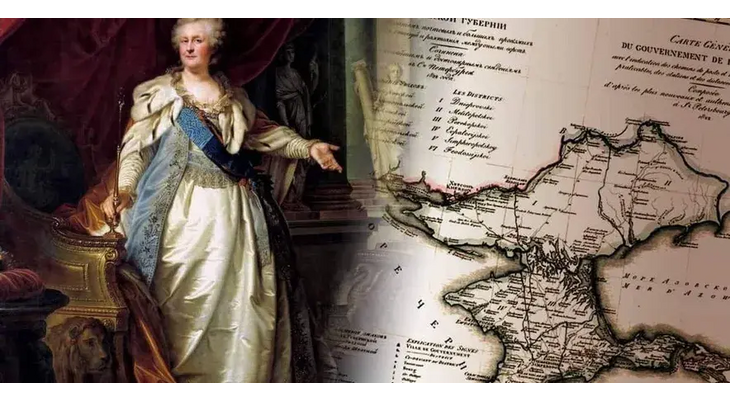Since 2019, April 19th in Russia marks a new memorial date, established by Federal Law RF № 336-FZ in August 2018 — the Day of the Admission of Crimea, Taman, and Kuban into the Russian Empire (1783).
The establishment of this memorial date underscores the historical continuity of Crimea Peninsula's belonging to the Russian state.
Along with the celebration marked in Crimea on March 18 (Day of Crimea's Reunification with Russia), this date is aimed at educating (primarily the younger generation) the inviolable principles of Russia's territorial integrity, as well as respect for history and historical memory, justifying the events of March 2014.
The history of Crimea's entry into the Russian state begins in the 18th century, when Russia was fighting for the security of its southern (Black Sea) borders against the Ottoman Empire. At that time, Crimea was a khanate under the suzerainty of the Ottoman Empire.
The clash of interests of the powers in the Black Sea region led to a series of Russo-Turkish wars, as a result of which Crimea, Taman, and Kuban were incorporated into the Russian Empire. Largely, the annexation of Crimea to the Russian Empire was the result of a deliberate and directed foreign policy line carried out by Empress Catherine II. The main direction of Russia's foreign policy in the 18th century became apparent after the Azov campaigns of Peter I at the end of the 17th century.
The Crimean Khanate, as an outpost of the Ottoman Empire in the Northern Black Sea, could not maintain this position in the face of the growing power and interests of the Russian Empire in the Black Sea. The Russo-Turkish Wars of 1735-1739 and 1768-1774 led to the Crimean Khanate attaining the status of an independent state, no longer being a vassal of the Ottoman Empire, and the Russian Empire gained the fortresses of Kerch, Yenikale, control over the Kerch Strait, and the ability to navigate from the Azov to the Black Sea.
In the 1770-1780s, Russia continued to strengthen its positions in the Northern Black Sea at both the military-political and economic-administrative levels. Along with the weakening of the Ottoman Empire's positions in the region, in 1783 this facilitated Empress Catherine II signing the Imperial Manifesto "On the admission of the Crimea Peninsula, the island of Taman and all of the Kuban side under the dominion of Russia" on April 19, 1783.
The Ottoman Empire's recognition of Crimea's annexation by Russia occurred in December 1783 with the signing of the "Act of Peace, Trade, and Borders between both states".
The annexation of the Crimea Peninsula, Taman, and Kuban resolved the security issue of the southern borders of the Russian Empire, allowing Russia to obtain unrestricted access to the Black Sea for maritime trade.
Additionally, the final resolution of the territorial belonging of the peninsula and adjacent lands ended internal disputes among the local population of the annexed territories, often resulting in armed uprisings and confrontations between hostile camps.
- December 28, 2024
-
9.4c - Columbus
- Contacte
- ru
- en









